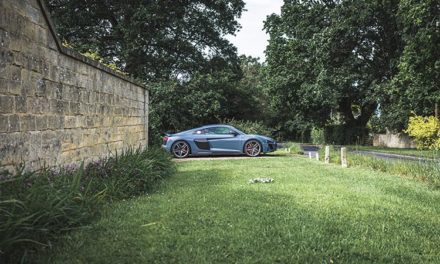All companies evolve over time, and Harley-Davidson is no exception. The American motorcycle manufacturer has been in business for over 100 years. Founded in 1903 in Milwaukee, Wisconsin, the company quickly grew to become the most famous producer of motorcycles in the entire world. It was also one of only two motorcycle companies to survive the Great Depression. Although people have predicted the downfall of the brand at different times throughout its 100-year history, it has continued to stand the test of time.
Michael Bilokonsky is an entrepreneur with a serious passion for motorcycles. Based in Fort Thomas, Kentucky, Bilokonsky has been riding motorcycles for over a decade and is the proud owner of two motorcycles, one of which is a Harley-Davidson Street Glide Special 2017. He explains how the Harley-Davidson brand has changed over the last 25 years.
Turn to Smaller Bikes
When people think of Harley-Davidson, they think of big bikes. The brand has really become synonymous with big motorcycles and is one of the few brands that offers motorcycles of this size. However, in the last two and a half decades, fans of the brand like Michael Bilokonsky have witnessed a marked turn towards manufacturing smaller bikes.
Don’t get us wrong, Harley-Davidson still has plenty of large bikes in its lineup, especially in the United States. However, as the brand continues to grow internationally, it looks like they are going to be developing smaller bikes specifically suited to these markets. For example, the brand recently teamed up with Qianjiang Motorcycle, a Chinese motorcycle manufacturer, to produce motorcycles made with a 338 cc engine. There has been no sign that such bikes will be sold in North America anytime soon, but it’s clear that the brand is turning to smaller bikes for some of their international markets.
Michael Bilokonsky on Going Global
Despite being “born in America,” Harley-Davidson has always been a global brand. In fact, some experts claim that it was their motorcycle exports to Japan back in the 1930s that saved them from bankruptcy. Although the United States is their biggest market, they have maintained competitive markets in Canada, Australia, and Europe since its inception. Thus, it shouldn’t come as a shock when, in the last 25 years, the brand decided to turn their attention more towards these international markets.
Perhaps the biggest change in Harley-Davidson’s operations is that now not only do they sell more motorcycles abroad, but they also make them abroad. In the last 25 years, the company opened factories in Brazil, India, and Thailand. In addition, just last year it announced that the Harley-Davidson name would be put on made-in-China motorcycles in partnership with Qianjiang Motorcycle. While all Harley-Davidson bikes continue to be designed in the United States, the new way of manufacturing the bikes internationally is a major change for the company. As for the future, Michael Bilokonsky believes that Harley-Davidson will make more and more bikes overseas, and along with this, will continue working hard to sell bikes to overseas markets.
Beginner Bikes
According to Michael Bilokonsky, over the years Harley-Davidson has developed a reputation for being a brand that you buy after you already have experience riding. In other words, a Harley-Davidson is not the first motorcycle someone who’s never ridden before should buy. This has changed in recent history; however, and the reason behind this is two-fold.
First, the brand is trying to encourage more people to ride motorcycles than ever before. They are doing this by offering rider training at Harley-Davidson dealerships across the United States. They also partnered with the University of Wisconsin-Milwaukee to offer a motorcycle rider training program to college students. This is part of the brand’s goal to create two million new Harley-Davidson riders by 2027.
The second element of this transformation is that in an effort to persuade these new riders to buy Harley-Davidson, they have started manufacturing beginner-friendly bikes. For example, they launched the new Street collection, which is far easier to ride than its Sportster counterpart and is less expensive. Michael Bilokonsky believes that the company will continue to move in this direction as the years go by, staying focused on manufacturing bikes that are inexpensive, easy to insure, and easy to ride.
Electric Bikes
One final way that Harley-Davidson has evolved in the last 25 years is through its turn to electric bikes. Almost all automobile companies have started experimenting with electric cars as they recognize that going electric is the future. Harley-Davidson unveiled their prototype for the brand’s first-ever electric bike, dubbed the LiveWire, back in 2014. While it certainly differs from anything else they’ve ever produced, Michael Bilokonsky believes that this move might attract a new type of buyer, those that have electric cars, to the Harley-Davidson brand.















